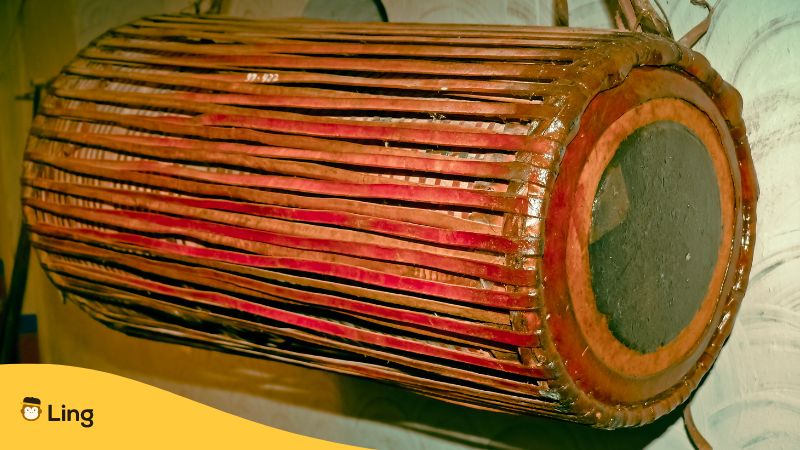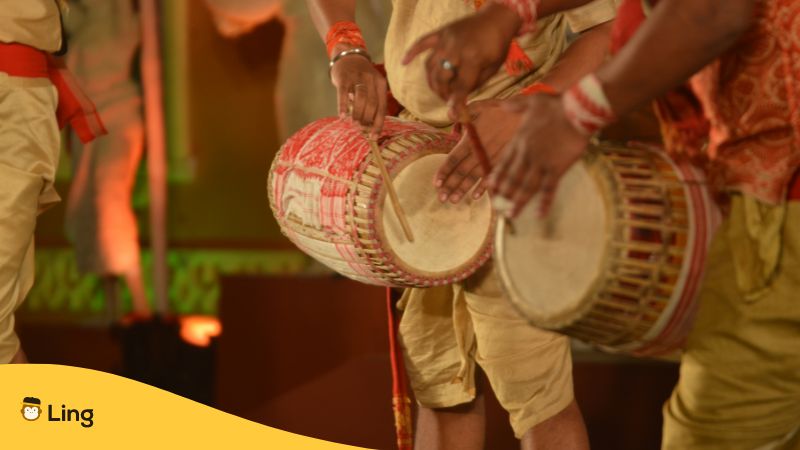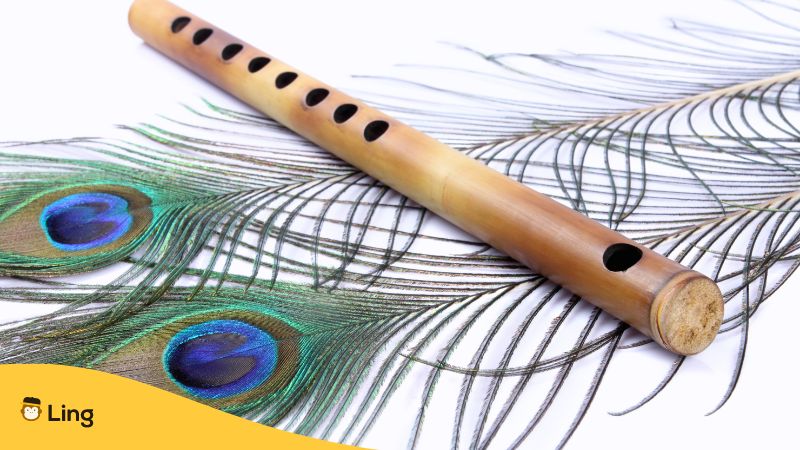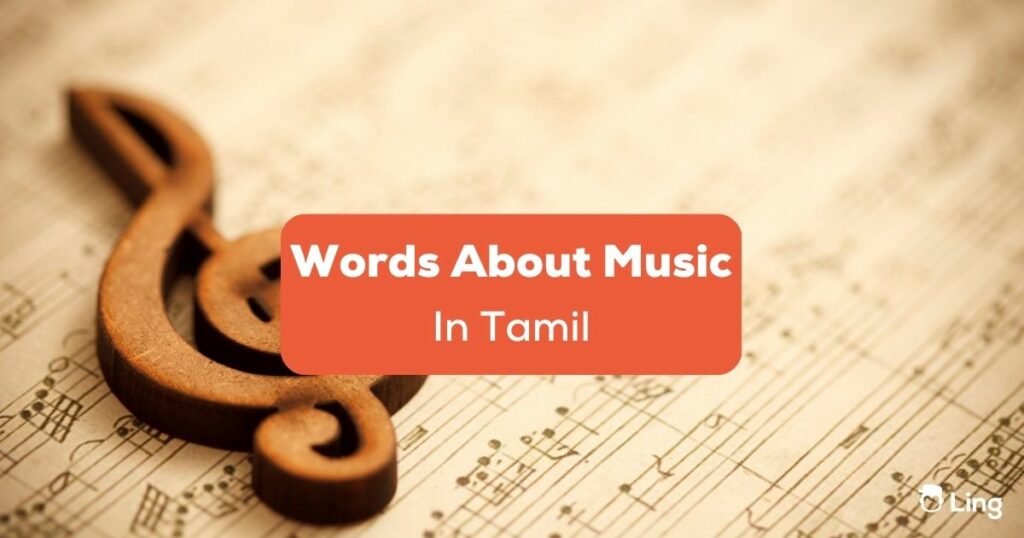Hey there, music lovers! It’s storytime. As a preteen, I was exposed to Tamil music purely by chance. I was at a friend’s place, discussing some words about music in Tamil, when he put on a track by one of the most renowned Indian Music Directors, AR Rahman. The song was ‘Vennilave Vennilave‘ from the Tamil movie Minsara Kanavu. And boy, did it blow my mind! I had heard the same melody in a Hindi song! Of course, what I had heard was from the Hindi-dubbed version of the same Tamil film.
Thanks to AR Rahman’s genius musical compositions in Tamil cinema in the 1990s, most Indians living outside of South India came to know Tamil music (Icai – இசை) for the first time. And let’s be honest, we’ve all had that one friend who raves about how AR Rahman’s music changed their life. But hey, who can blame them? With tracks like ‘Uyire Uyire, ‘Kadhal Rojave’, and ‘Mustafa Mustafa,’ AR Rahman’s music is nothing short of magical. And that Oscar win for Slumdog Millionaire is proof enough!
But Tamil music is more than just AR Rahman’s compositions. It has a rich history and a distinct style that’s been shaped by the region’s unique cultural influences. From classical Carnatic music to modern-day film music, Tamil music has something for everyone. So, whether you’re a die-hard fan of AR Rahman or a newcomer to the genre, I invite you to explore this wondrous world and experience the magic for yourself.

What Constitutes Tamil Music
Tamil music refers to a genre of music native to the Indian state of Tamil Nadu. It is a distinct style of music that is characterized by its use of Tamil lyrics (Pāṭal varikaḷ – பாடல் வரிகள்), unique instrumentation, and rhythmic patterns. Tamil music has a rich history that dates back thousands of years and is deeply rooted in Tamilian culture and traditions. It is often said that it predates Carnatic music.
Carnatic music (Karnāṭaka icai – கர்நாடக இசை) is a form of classical music (Pārampariya icai – பாரம்பரிய இசை) that originated in the southern part of India, primarily in the state of Tamil Nadu. It is one of the oldest forms of music in the world and is known for its complex melodic and rhythmic structures. It is performed using a range of traditional instruments, such as the mridangam, violin, veena, and flute, and is often accompanied by classical dance performances.
Indian music is broadly divided into two categories – Carnatic music and Hindustani music. The key difference between the two lies in their origin, style, and performance. While Carnatic music originated in the south of India, Hindustani music originated in the north. The former is known for its complex melodic structures and the use of intricate rhythmic patterns, while Hindustani music is known for its focus on improvisation and the use of ragas.

Tamil And Carnatic Music Systems
Despite their differences, Tamil music and Carnatic music are closely related. This is because Tamil music draws heavily from the classical Carnatic music tradition. The influence of Carnatic music can be seen in its instrumentation and composition, as well as in the use of traditional rhythmic patterns.
One of the key features of Tamil music is its use of percussion instruments such as the mridangam, which is a traditional Carnatic instrument. The mridangam is a double-headed drum that is used to provide the rhythmic backbone of Tamil music. It is played using a technique known as ‘kanakku,’ which involves the use of intricate mathematical calculations to create complex rhythmic patterns. This technique is derived from Carnatic music.
Another important aspect is its melodic structure. Carnatic music is known for its use of ragas, which are melodic frameworks used to create complex and expressive melodies. Tamil music also uses ragas, although they are often modified to suit the unique characteristics of Tamil music. This modification is done by incorporating the use of microtones and other traditional Tamil music techniques.
In addition to its use of Carnatic music techniques, Tamil music also has its own unique style and characteristics. For example, Tamil music is known for its use of folk elements, such as traditional folk instruments like the nadaswaram and thavil. It also incorporates elements of Western music, such as the use of guitar and other modern instruments.

Evolution From The Ancient Tamil Music
The Sangam literature period (Caṅka kālam – சங்க காலம்) of ancient Tamil history, which lasted from the 3rd century BCE to the 4th century CE, was a time of great cultural and literary flourishing in the Tamil region. During this period, Tamil music played an important role in people’s social and religious life.
Tamil music during the Sangam period was primarily vocal, with instruments like the yal and the thudi being used to provide rhythmic accompaniment. The music was closely linked to poetry, with many Tamil poems being set to music and sung at various occasions, such as weddings and funerals.
The themes of the music were diverse, ranging from love and romance to war and heroism. Many of the songs were also religious in nature, with devotional songs and hymns being sung in temples. Tamil music during the Sangam period was an integral part of Tamil culture, language, and identity, and its influence can still be seen in modern Tamil music today.

List Of Words About Music In Tamil
| English | Tamil | Roman Pronunciation |
|---|---|---|
| Music | இசை | Icai |
| Song | பாடல் | Pāṭal |
| Lyrics | பாடல் வரிகள் | Pāṭal varikaḷ |
| Rhythm | தாளம் | Tāḷam |
| Musical Scale | இசை அளவுகோல் | Icai aḷavukōl |
| Tune | இசைக்கு | Icaikku |
| Melody | மெல்லிசை | Mellicai |
| Sound | ஒலி | Oli |
| Musical Notes | இசை குறிப்புகள் | Icai kuṟippukaḷ |
| Voice | குரல் | Kural |
| Pitch | சுருதி | Curuti |
Modern Tamil Music
Modern Tamil music (Navīṉa tamiḻ icai – நவீன தமிழ் இசை) has evolved from its ancient roots to become a vibrant and diverse form of music, influenced by various genres, languages, and styles from around the world. Today, Tamil music encompasses a wide range of styles, from classical Carnatic music to contemporary film music and pop music.
One of the defining features of modern Tamil music is its use of electronic instrumentation, with synthesizers, drum machines, and other digital tools commonly used to create innovative sounds and textures. In addition, it has also embraced collaboration, with artists from different regions and cultures coming together to create unique and exciting music. Overall, modern Tamil music is a dynamic and ever-changing art form that continues to captivate audiences around the world.
In A Nutshell
Tamil music is a distinct genre of music that is closely related to Carnatic music. It draws heavily on ideas from the classical Carnatic music tradition and incorporates its melodic and rhythmic structures. Despite this influence, Tamil music also has its own unique style and characteristics, which make it a rich and diverse form of music that is deeply rooted in the culture and traditions of Tamil Nadu.

Try Tamil With Ling!
Now that you know so much about Tamilian music, would you like to explore the Tamil language further? If yes, head straight to the Ling app. Trust us, it’s unlike any other platform! With its gamified interface, interactive exercises, and fun quizzes in more than 60 languages, it is going to be your favorite language-learning buddy.
So, what are you waiting for? Visit Google Play Store or App Store and download the Ling app for free today!























